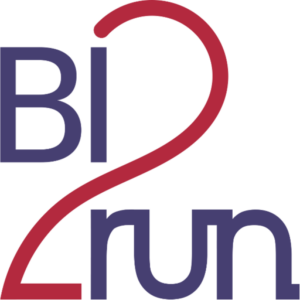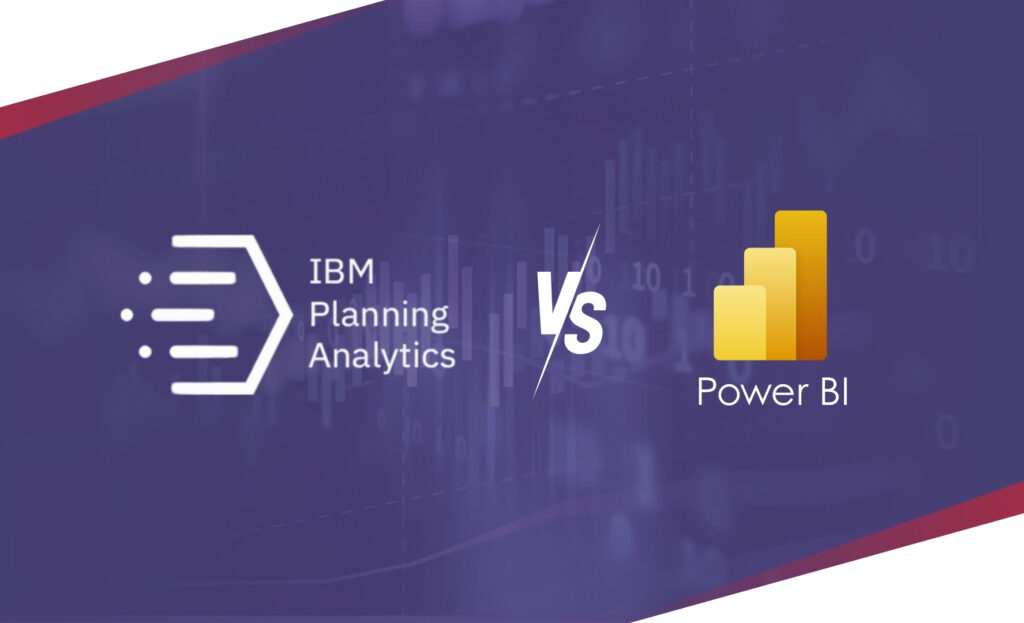Now more than ever, companies are faced with the challenge of not only presenting their data in a meaningful way, but also making it usable for reliable decision-making. While tools such as Power BI set the standard in reporting, platforms such as IBM Planning Analytics (TM1) are gaining importance when it comes to planning, budgeting, and forecasting. But what are the differences—and which tool really suits your controlling requirements?
Why this comparison is important
Many companies are faced with the question: Do we need a pure reporting tool or a full-fledged planning platform? The answer depends heavily on the requirements in controlling. While Power BI is often considered the standard in reporting, IBM Planning Analytics (TM1) is the gold standard when it comes to planning, budgeting, and forecasting.
Comparison at a glance
| Criterion | Power BI | IBM Planning Analytics (TM1) |
| Main Strength | Visualization & Self-Service Reporting | Planning, Forecasting & Writeback |
| Data Model | Tabular (DAX, data import) | Multidimensional (OLAP cubes) |
| Writeback | Not native, only with third-party add-ons | Fully integrated, including scenario planning |
| Governance | Good for reporting, less so for planning | Granular access rights, audit trails |
| Integration | Strong connection to the MS ecosystem | SAP, ERP, databases, Excel add-in (PAfE) |
| Deployment | Cloud-first (Power BI Service) | Cloud & on-premises, scalable |
| Typical Application | Dashboards, management reporting | Budgeting, forecasts, scenarios |
Where Power BI excels
Power BI is one of the leading tools for self-service BI.
- Intuitive drag-and-drop dashboards
- Powerful visualizations for management and specialist departments
- Easy integration into the Microsoft ecosystem (Excel, Teams, SharePoint)
- Ideal for quick reports when transparency and visualization are key
However, Power BI is not a planning tool. Anyone who wants to map forecasts or budgets will quickly reach their limits without additional third-party solutions.
Where IBM Planning Analytics (TM1) excels
IBM TM1 is more than BI—it is a full-fledged planning platform.
- In-memory OLAP cubes for flexible, multidimensional scenarios
- Writeback: entries, simulations, and forecasts directly into the model
- Top-down and bottom-up planning possible simultaneously
- Integration into ERP systems, databases, and Excel (PAfE)
- Granular security for planning, approval processes, and auditing
This makes TM1 particularly suitable for companies that see planning and controlling as a core task—in other words, companies that want to go beyond pure reporting.
Comparison of typical scenarios
Scenario 1: Business planning
- Power BI: Presentation of historical data, visualization of KPIs
- TM1: Creation of budgets, simulation of forecasts, real-time adjustments
Scenario 2: ESG reporting
- Power BI: Visualization of ESG metrics
- TM1: Recording & planning of ESG KPIs (including writeback, e.g., CO₂ targets)
Scenario 3: Ad hoc analysis
- Power BI: Ideal for self-service, fast dashboards
- TM1: Possible, but less intuitive for end users—focus is on planning
Decision path: Which tool is more suitable?
- Is your primary goal reporting and visualization? → Power BI is sufficient.
- Is your goal integrated planning, budgeting, and forecasting? → IBM Planning Analytics is the right choice.
- Do you want to combine reporting and planning? → A combination of both tools is possible (e.g., Power BI for visualization, TM1 for planning).

Common mistakes in practice
- Misusing Power BI as a planning tool → leads to Excel-like workarounds and unstable processes.
- Using TM1 only for reporting → wastes its full potential, as TM1 is primarily intended for planning.
Mini case (example)
A medium-sized manufacturing company had previously relied on Excel and Power BI for reporting. However, annual budget planning was extremely time-consuming and prone to errors. After introducing IBM Planning Analytics, forecasts could be created in a matter of hours instead of days. Power BI remained in use for visualization in management — the combination brought the best of both worlds.
FAQ
What is the main difference between Power BI and IBM Planning Analytics (TM1)?
Power BI is a reporting and visualization tool, while TM1 is a platform for planning, budgeting, and forecasting with writeback.
Can Power BI be used for planning?
Not native. Planning in Power BI is only possible with third-party add-ons.
Can Power BI be combined with TM1?
Yes, many companies use TM1 for planning and Power BI for visualization—a proven combination.
Is IBM Planning Analytics Cloud-based?
Yes, TM1 is available both cloud-based and on-premises.
Who is TM1 particularly suitable for?
For companies that have planning, forecasting, and scenarios as core processes in controlling.
Conclusion & recommendation
Both tools have their strengths. If your primary goal is to visualize data, Power BI is a good choice. However, if you need planning, forecasting, and simulation capabilities, IBM Planning Analytics (TM1) is the way to go.
👉 Our recommendation: Take advantage of the strengths of both worlds. Let us advise you on whether IBM Planning Analytics can transform your planning processes.







